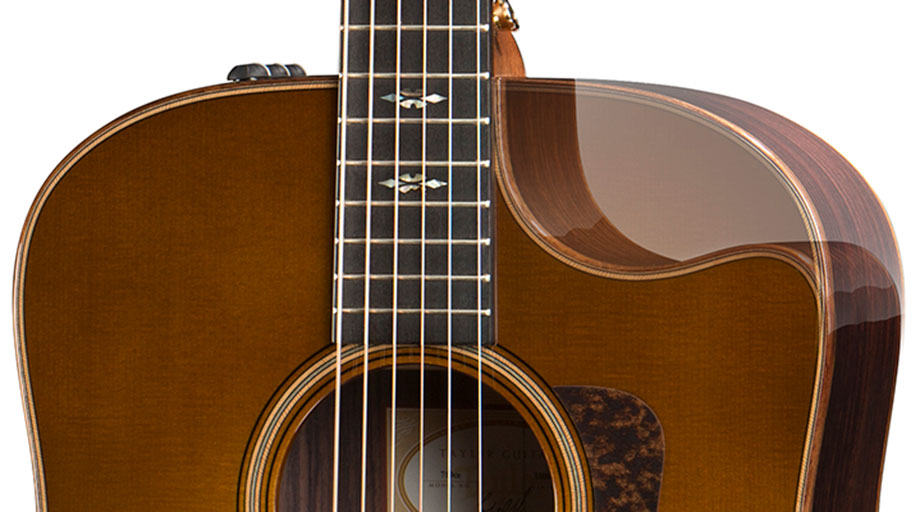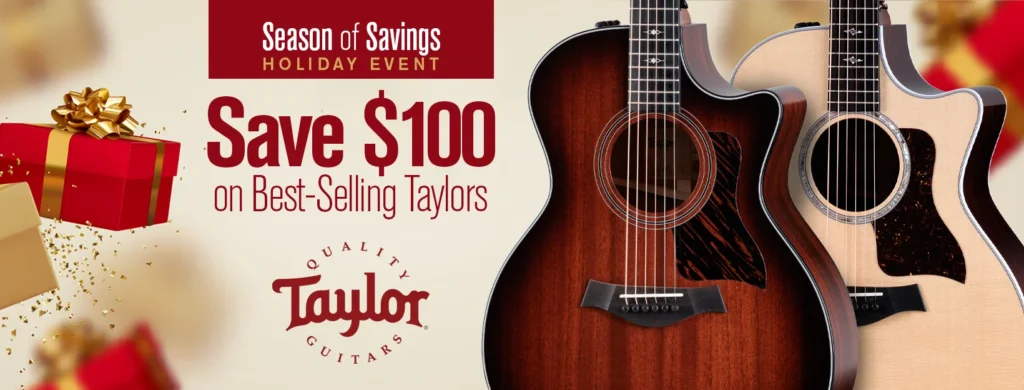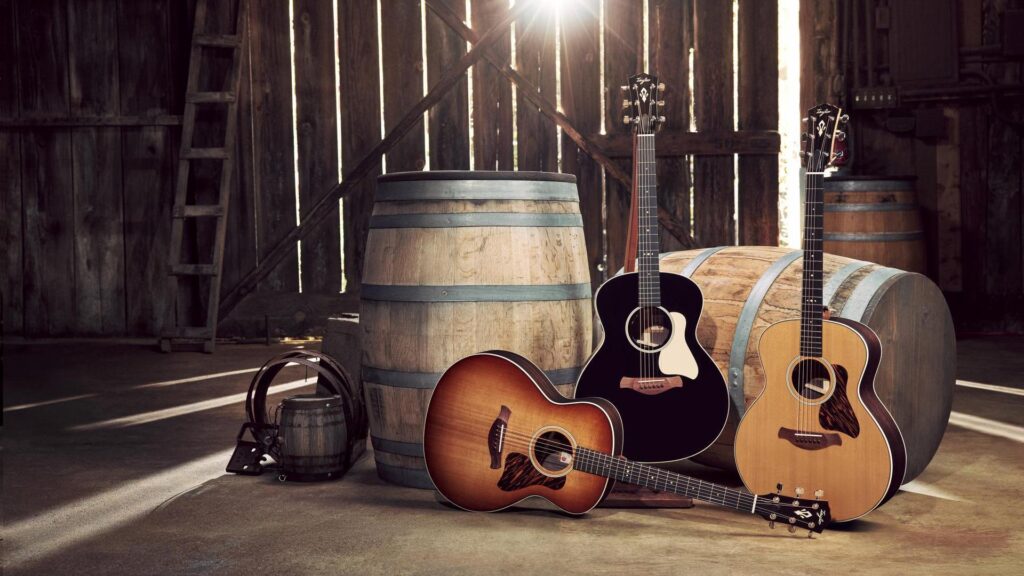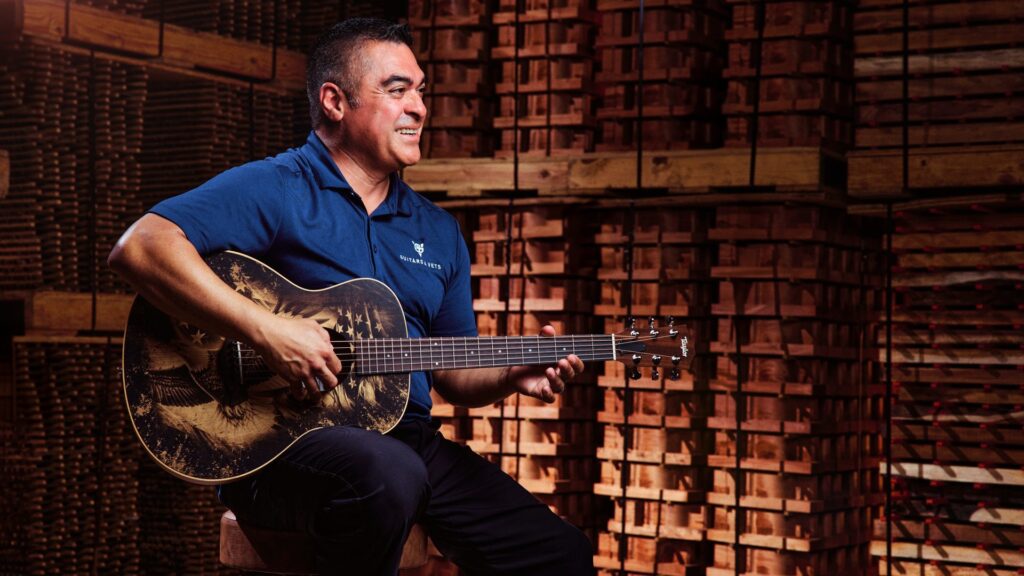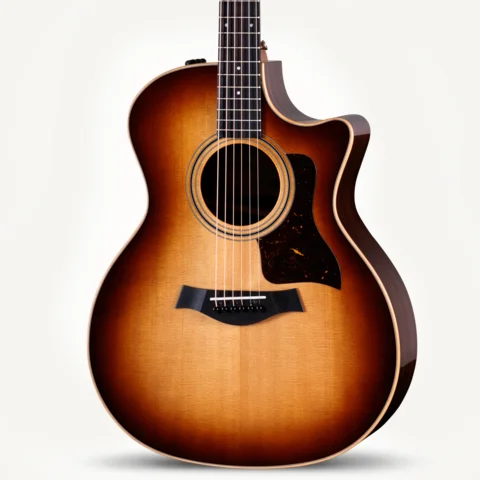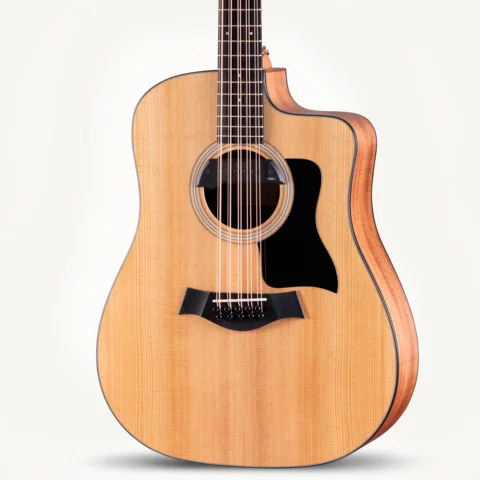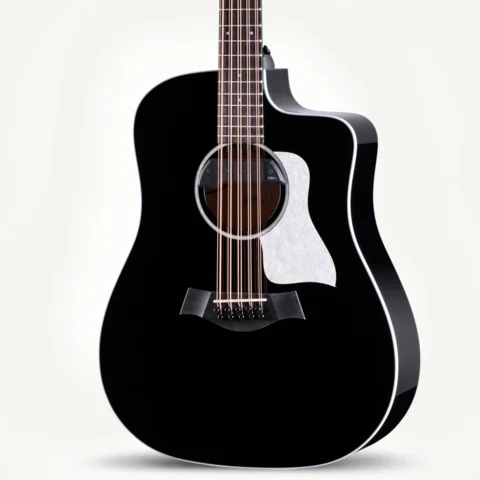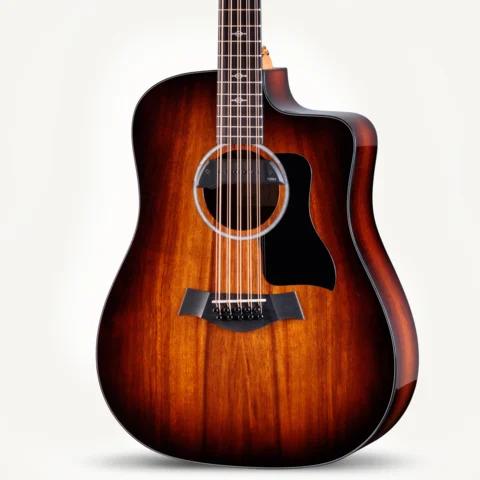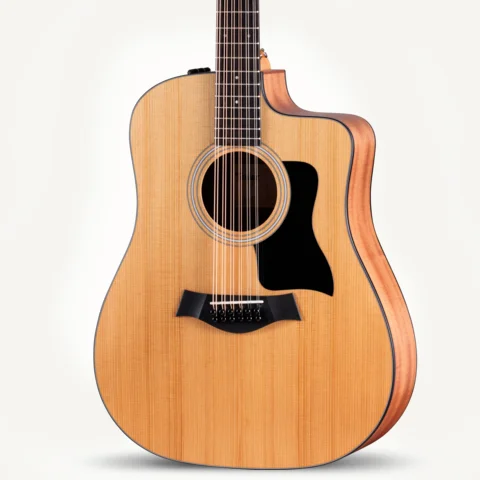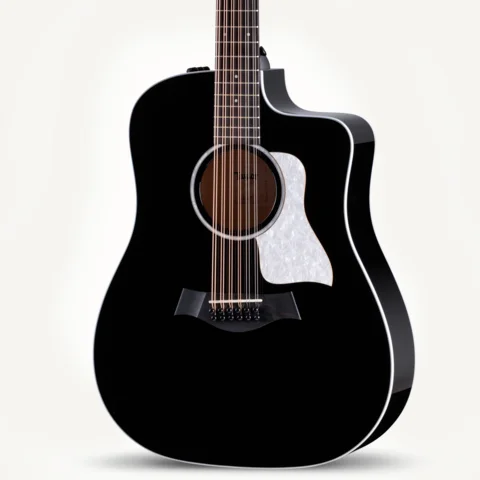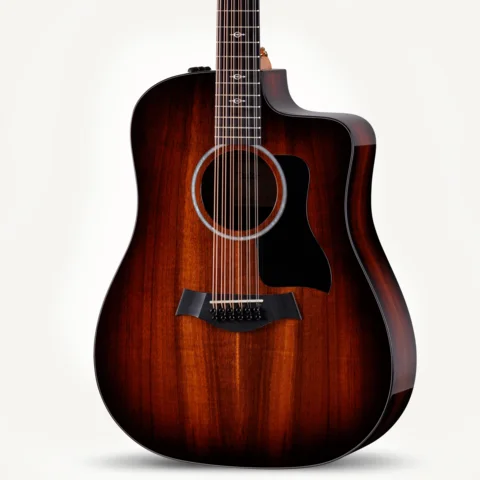One of the most rewarding aspects of being a part of Taylor’s sales team is visiting music stores to host events, where we talk with people about the properties that distinguish acoustic guitars. One of the most-asked questions my colleagues and I hear is this: “How does a cutaway affect a guitar’s sound?” The real question behind this question for many is: “How much does a cutaway diminish the tonal output of a guitar?” People want to know if getting a guitar with a cutaway means they’ll end up sacrificing sound. It’s a great question. Allow me to break it down for you.
In general terms, the main factors that contribute to an acoustic guitar’s sound (besides the player) are the overall build design, the body shape (including the positioning of the waist), and the tonewoods used for the top, back and sides. Secondary contributing factors include the materials used for the bracing and kerfing inside the guitar body, the actual bracing pattern (the shape and positioning of the bracing pieces), the materials used for the neck, the materials used for the nut and saddle, the material and gauge of the strings, and the material and gauge of pick used to play the guitar. As you can see, there are a lot of elements in the mix.
Related: Free Download: The Definitive Guide To Buying An Acoustic Guitar
Any time we remove mass from a guitar, whether it’s scalloping the bracing, tapering a top, carving a slotted peghead, or creating a cutaway, we’re changing the physics of the guitar body. So, by the simple laws of science, yes, there is a difference in sound between a guitar with a cutaway and a non-cutaway. The sound of the guitar without a cutaway will perhaps be a bit fuller in the lower register.
Honestly, to my ears, if I had two close-to-identical guitars — let’s say both were built out of sets of wood from the same billet, on the same day, by the exact same people, strung-up with the same strings, and played with the same size/material guitar pick — but one had a cutaway and one didn’t, I’d have a hard time telling the sonic difference between the two. Those other factors I mentioned earlier would probably have a more profound effect on the guitar tone and volume than the cutaway would.
Related: 20 Acoustic Guitar Terms You Need To Know
The next time you’re in a music store, try this: Hold the guitar by the neck, and lightly tap the guitar top (cutaway or non-cutaway) on the bass side, upper bout. You’ll hear very little resonance, a quick decay, and not much volume. Now move down to the bottom end of the guitar and tap the bass side, lower bout of the guitar. The tone rumbles, the volume resonates, and you’ll hear nice overtones coming out of the guitar. This gives you an idea of how much (or rather, how little) a cutaway has to do with the overall tone and volume of an acoustic guitar. There’s so much tightness in the upper bout where the body meets the neck — the kerfing is tighter, the shoulders are smaller, and you have a neck block and neck heel inside the body that take up real estate around that area of the guitar. That’s where a cutaway lives — essentially in one of the least resonant areas of the guitar. Once again, where the waist is positioned on the body and how tapered it is in relation to the body have much more impact on the overall tone of the guitar. The majority of the tone is rolling around down there in the lower bout.
Related: 8 Tips for Trying Out and Choosing an Acoustic Guitar
A better way to decide whether you should get a guitar with a cutaway is to think of it functionally, and then aesthetically. If you like to play first-position chords and never go past the fifth fret, musically speaking, there’s no real reason to buy a guitar with a cutaway (plus, all the money is in those first five frets, according to Tommy Tedesco or James Jamerson, or any other guitar player this quote has been attributed to). If you need to pull off blazing guitar solos on your acoustic guitar, or like having the room to venture further up the neck and into the upper register, then get a guitar with a cutaway. Otherwise, do you have a preference in terms of the visual aesthetic? Some people like the symmetry or traditional look of a non-cutaway. Others love the contoured curve of a cutaway. Try not to get too bogged down by the minutiae or theoretical notion of each little aspect of the guitar. Trust your feelings when you play and compare different guitar models. If you do, you’ll find the one that speaks to you.
To test-drive Taylor guitar models with a cutaway (or non…), visit your local authorized Taylor Dealer today!

























